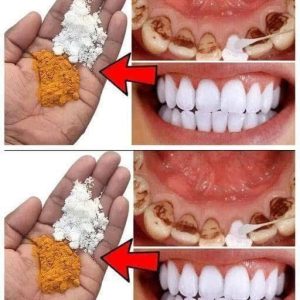Veins are the body’s essential highways for blood, responsible for carrying it back to the heart after oxygen has been delivered to tissues. Unlike arteries, which are deep and muscular, veins sit closer to the skin’s surface. Their visibility can therefore depend on a variety of factors including skin thickness, fat levels, and circulation. Thin or fair skin naturally makes veins more noticeable, while thicker skin or higher levels of subcutaneous fat can obscure them.
Several common, harmless reasons exist for veins becoming more visible. One of the most frequent is low body fat. Athletes or people who have recently lost weight often notice that their veins stand out more than before. This is because there is less fat beneath the skin to obscure the veins, making them appear more prominent. Similarly, aging plays a role. As we get older, the skin gradually loses elasticity and becomes thinner, which naturally makes veins more visible.
Exercise is another contributor. When you work out, blood flow increases to deliver oxygen to your muscles. This surge in circulation causes veins to temporarily swell, often making them more noticeable. Heat has a similar effect. When the body warms up, veins dilate to help regulate temperature, which can make them stand out, especially on the hands or legs. Genetics also cannot be overlooked. Some people simply have a natural predisposition to more visible veins due to inherited traits.
While most visible veins are harmless, there are situations when they can signal a medical problem. One of the most common concerns is Chronic Venous Insufficiency, or CVI. This occurs when vein valves weaken and are unable to efficiently push blood back toward the heart. Blood can pool in the legs, causing swelling, discomfort, and a feeling of heaviness. Left untreated, CVI can progress, so recognizing it early is important.
Varicose veins, a related condition, are characterized by bulging, twisted veins. These veins often appear blue or dark purple and may be accompanied by throbbing, itching, or irritation. While varicose veins are generally not dangerous, they can be uncomfortable and sometimes indicate underlying circulatory issues. More serious conditions include superficial thrombophlebitis, where a small clot forms in a vein near the surface of the skin, causing redness, tenderness, and warmth. The most critical scenario is Deep Vein Thrombosis (DVT), a clot in a deep vein that can be life-threatening if it travels to the lungs. Recognizing the symptoms—sudden swelling, pain, warmth, or changes in skin color—is essential, as DVT requires immediate medical attention.
Other temporary factors can also make veins more visible. Dehydration reduces the volume of fluid in the blood, which can cause veins to appear more pronounced. Hormonal fluctuations, such as those occurring during pregnancy or menopause, may also contribute. Rapid weight loss can similarly make veins stand out due to the reduction in subcutaneous fat. Even minor lifestyle changes, like standing or sitting for long periods, can temporarily affect how visible veins are.
Knowing when to seek medical attention is key. If veins suddenly become prominent without a clear reason, or if you experience pain, swelling, redness, warmth, or changes in skin texture, it’s important to consult a healthcare professional. A family history of vein disease can also increase your risk, making vigilance necessary.
Maintaining vein health doesn’t always require medical intervention. Staying active is crucial. Regular movement, whether walking, swimming, or cycling, helps blood flow efficiently through the veins. Maintaining a healthy weight reduces pressure on leg veins, while avoiding prolonged sitting or standing can prevent blood from pooling. Compression stockings are another practical tool, especially for people who are prone to swelling or spend long hours on their feet.
For more severe cases, medical treatments may be considered. Sclerotherapy involves injecting a solution into affected veins to cause them to collapse and fade. Laser therapy uses focused light to achieve a similar effect, while surgical options may be necessary for extensive varicose veins or cases of CVI. These treatments are generally effective and safe when performed by qualified specialists.
Despite the occasional concern, visible veins are often just a normal part of life. They are your body’s natural plumbing system, working silently to transport blood and keep your body functioning. Rather than a cause for alarm, they can be seen as a sign that your circulatory system is active and healthy.
In the end, noticing your veins more prominently is rarely a reason to worry. For most people, it is a harmless result of age, fitness, genetics, or temporary factors like exercise and heat. Yet understanding the potential warning signs of medical conditions, and knowing how to maintain vein health, ensures that you can distinguish between normal and concerning changes. By staying informed, living an active lifestyle, and consulting a healthcare provider when necessary, you can keep your veins healthy and functional for years to come.
Your veins tell a story of your body’s inner workings. Whether they stand out after a workout, during hot weather, or simply because of your genetics, remember that they are a vital part of your circulatory system. Next time you notice your veins, take a moment to appreciate the complex network working tirelessly beneath your skin. Most of the time, what you see is perfectly natural, a small window into the amazing machinery of your own body.





